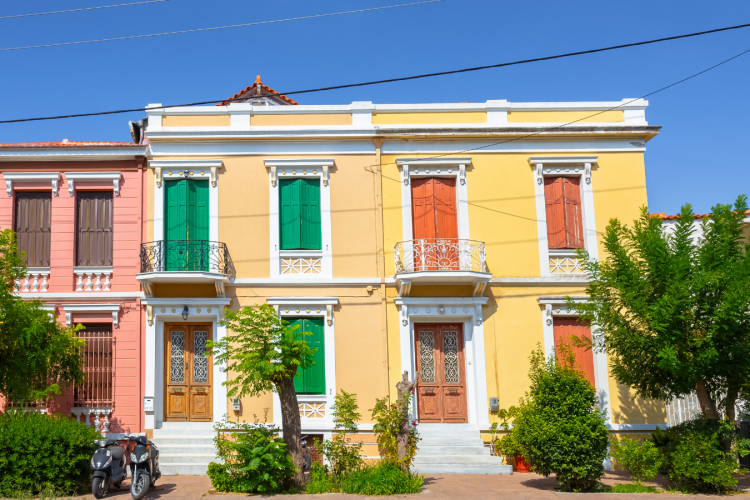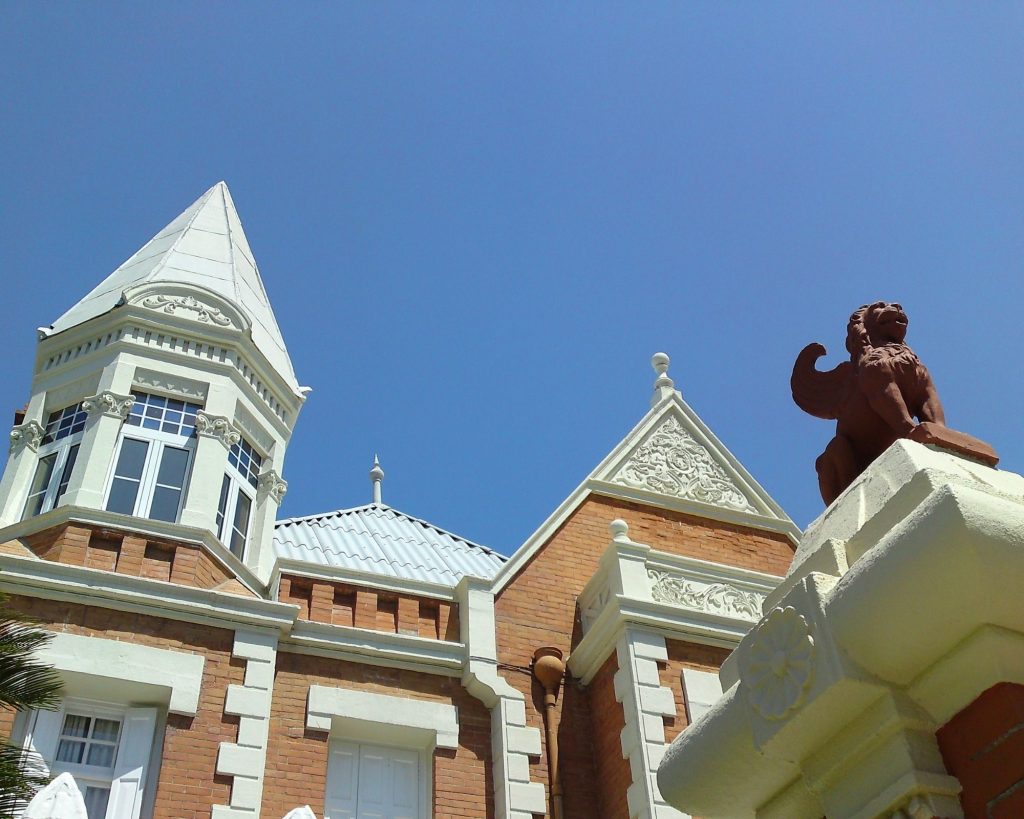Architecture in Lesvos

Perhaps when you hear the phrase “Aegean architecture”, your mind conjures up images of tiny white houses with blue doors and window frames. However, there is so much more complexity to this collection of islands, and Lesvos is the ideal place from which to explore the architectural influences of the iconic Greek islands. From castles to farmhouses, and from Ottoman buildings to neo-Gothic masterpieces, an architectural tour of Lesvos is both a trip into the history of the island and a glance at the uniqueness of the other Aegean.
Mytilene, the capital of Lesvos, could be the topic of an entire diatribe on its own. Big imposing windows, heavy wooden doors, and marble staircases are matched with pillars and pediments to clearly indicate the rich, urban past of the city. The buildings were built, for the most part, on the cups of the 19th to the 20th century, combining baroque and neo-gothic elements with classical Greek architecture. Many of the most iconic buildings in Mytilene are situated near the dock, such as the old Grand Bretagne hotel, the old Coast Guard and City Hall buildings and the Kolones building.

In the suburbs of the city one can also discover many elegant, well-maintained mansions. However, there are also many works that serve as reminders to the Ottoman rule of Mytilene. The Yeni Tzami mosque on Ermou street, the building in which the Municipal Gallery is now hosted, as well as the Charsi Hamam in the Agora are all perfect examples of the middle eastern architectural style.

Mansions are not limited to Mytilene, the capital, however. They are also present in other settlements, like Sourada and Petra. The latter is home to the famous Varelitzidaina mansion. This building is an exquisitely restored example of upper class architecture of the late Ottoman period in Lesvos. Today, the building houses an interactive museum and certainly, is worth a visit.
Molyvos is the most traditional large village on the island, and home to the second biggest castle. During the summer, there are a number of festivals that take place here. The village is mostly made up of stone structures with wooden details, red brick roofs and colorful doors. Here also one can find mansions, such as the Kralli house, which today is under the hospices of the School of Fine Art.

A special part of Lesvos’ architectural landscape are its castles. Most of them are in the area of Purgoi Thermis. Their style is a testament to their owners’ focus on safety. These 3 story stone structures were built as summer homes for wealthy families. Their first floor is the fort, as it has no windows and only a small entrance. The additional floors, however, do have arched windows.
In other villages, such as Agiasos, one can find more traditional buildings with tile roofs and a unique feature, sahsinia. These are wooden additional floors that stick out from the main structure and are supported by wooden beams These light structures feature large windows that allow light to flood the home. In Agia Paraskevi, the small village near the bay of Kalloni, visitors can admire great examples of neoclassical architecture, like the school building and the old Town Hall. The Pammegistoi Taxiarhes church, with its tall bell tower, completes the scene. The village is strewn with small cobble streets, on each side of which are traditional coffee shops.
Besides secular architecture, Lesvos also has stunning examples of religious buildings. The metropolitan church of Agios Athanasios in the old town of Mytilene features an impressive 33 meter gothic bell tower. This style can also be seen at Agios Therapontas, a church on the Mytilene boardwalk. There are also many smaller churches with architectural interest, as well as many intriguing monasteries, such as the Limonos monastery.

All around the countryside of Mytilene, one can spot examples of agricultural architecture, in the form of farmhouses, bridges and manmade springs. Also, there are fine examples of industrial architecture, as during Mytilene’s high economic growth period, there were many factories that supported the production of olive oil, soap and other staples. Many of these spaces have been renovated and now function as museums and cultural centers.
The architectural identity of a place serves as a cross section of its history. In this fashion, Lesvos’ varied architecture has the power to charm visitors not just with its stark beauty, but also with the weight of its history and the narratives it whispers to them.
